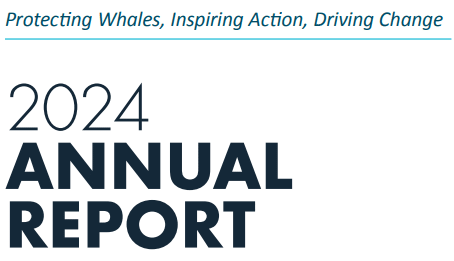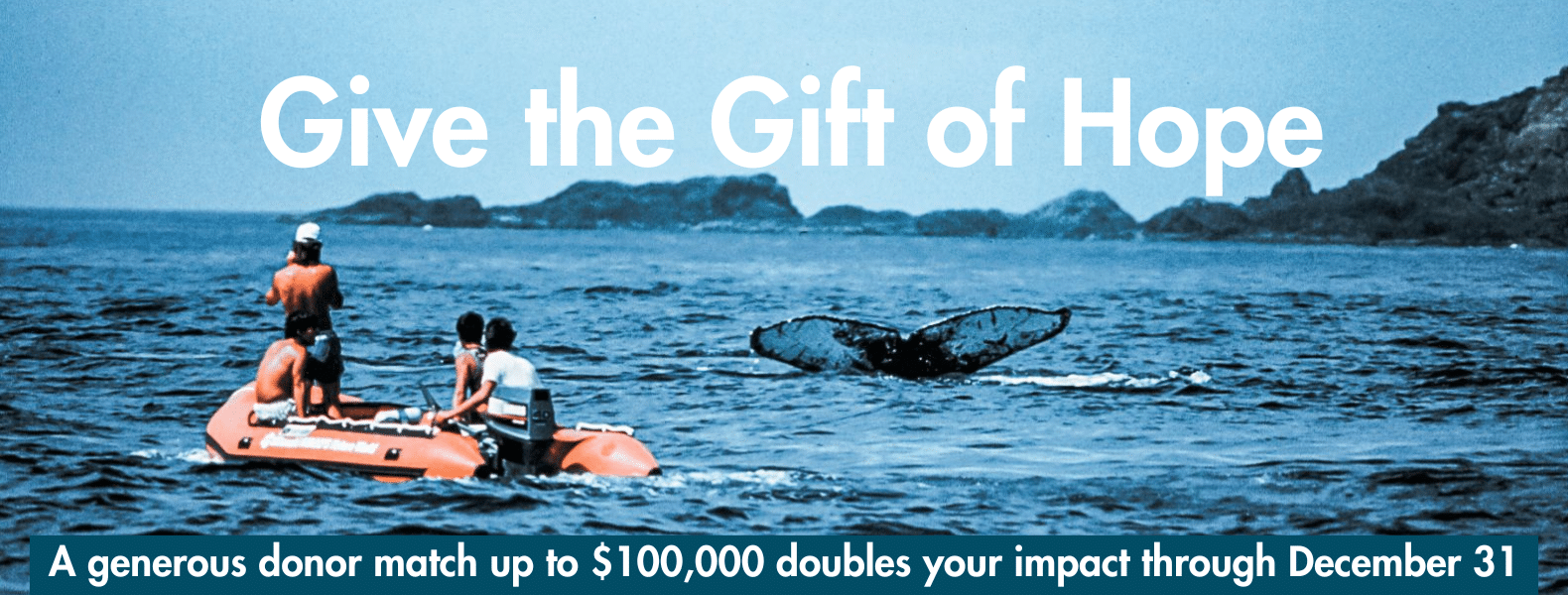When whales and ships collide, it is often fatal or so detrimental that the interaction ends in eventual loss of the whale’s life1. In our last installment, we outlined the threat of ship strikes, including where, why and how they occur. In this next installment, we examine via case study efforts being made to mitigate the impact of vessel collisions with marine mammals.
At this very moment, there are thousands of containerships operating on the world’s seas and waterways, providing food and supplies to communities around the globe2. According to MarineTraffic, a global provider of ship tracking and maritime intelligence, 180,000 distinct vessels are recorded traversing the ocean on any given day2. So how do we identify the highest risk areas for whale and ship interaction? We look to those areas where high-traffic ports and high-use areas for large whales overlap. Here, we examine three locations that have high incidences of ship strikes and consider the efforts made to mitigate this stressor.
Santa Barbara Channel + blue whales

The Santa Barbara Channel, a portion of the Southern California Bight that separates the mainland of California from the northern Channel Islands, is approximately 70 nautical miles (nmi) long and 24 nmi across. In the perpendicular (east-west) direction, this “marine highway” sees large cargo vessels traveling to or from Los Angeles and Long Beach — two of the largest ports in the U.S.5.
Fig. 1: Map of heavily trafficked area both by whales and ships. Source: Los Angeles Dolphin Project.
In this channel, plentiful feeding grounds for blue and humpback whales overlap with busy shipping lanes transited by thousands of vessels arriving and departing these ports every year3. Although commercial whale-watching vessels have identified this area for its abundant opportunity, their intention is always to view the whales, whereas major shipping vessels may not be looking out for whales, adding to the risk they pose. Scientists estimate nearly 100 blue, humpback and fin whales are killed by vessel collisions along the west coast of the U.S. every year4.
In this area, the Benioff Ocean Initiative launched a program called Whale Safe, a technology-based mapping and analysis tool that collects and displays real-time whale and ship data to help prevent fatal ship collisions with whales. The Whale Safe system integrates acoustic and visual whale detections with model predictions to provide mariners with the most up-to-date whale presence. The technology also used Automatic Identification System (AIS) data to track ship speeds and calculate cooperation rates with voluntary speed limits put in place by NOAA and the Coast Guard in order to protect whales3. This approach incorporates AI-powered ocean sensors, big data models, community science and ship tracking data to attempt to mitigate the harm to whales in this heavily trafficked area.

Gulf of St. Lawrence + North Atlantic right whales

Looking to the opposite coast of North America, we examine the next ocean area with a high risk of whale and vessel collision. The Gulf of St. Lawrence (GSL) is an outlet of the North American Great Lakes into the Atlantic Ocean via the Saint Lawrence River. The gulf is a semi-enclosed area of about 65,700 nmi and is adjoined by half of the ten Canadian Provinces; Quebec, Newfoundland and Labrador, Nova Scotia, Prince Edward Island, and New Brunswick.
Fig 3: North Atlantic right whale migratory routes and stops. Source: Smithsonian Ocean
The GSL is used as a feeding ground for the critically endangered North Atlantic right whale and sees large numbers of whales in the summer and fall months after their migration north from the warm winter calving grounds in the south. The right whale feeds primarily on a small crustacean-like plankton called copepod. Copepods require cold water temperatures to grow and thrive, and the Gulf is an excellent source for this. In addition to the colder, more nutrient rich waters of the GSL, it is also a shallow continental shelf with three large, deep basins, which are ideal habitat for copepods and therefore an attractive location for a hungry right whale6.
The problems for the right whale in this area are not exclusively attributed to ship strikes, as interactions with fishing gear also pose a risk to the right whale. However, based on necropsies from the deaths that occurred in the GSL, blunt trauma from ships is a key problem7. Hundreds of commercial vessels from over 50 countries make 3,000-4,000 transits per year through this region9. In an effort to reduce the stressor of ship strikes to the North Atlantic right whale in the GSL, the Canadian government implemented a rule pertaining to speed travel on Atlantic waters which requires vessels of 65 feet or more to travel at 10 knots or less while traveling in the western gulf 7.

The Canadian federal government is also planning to implement a new set of laws concerning fishing gear to continue improving the safety of whale migration in the GSL. There are even talks of creating a marine protected area (MPA) around the Laurentian Channel, where the whales are prone to injury7. Although this series is spotlighting ship strikes as a stressor to whales, some mitigation mechanisms are similar to actions taken to lessen the threat of climate change, as well as the occasional regional overlap with fisheries interactions. While Canada has shown real leadership, we need to implement some of the same in the U.S. to protect this critically endangered population and begin considering the establishment of MPAs.
Stellwagen Bank + North Atlantic right whales
Moving slightly south into U.S. waters, this same population of North Atlantic right whale, as well as other migrating baleen whales, are under threat by ship strikes. We examine the mitigation tactics employed in this area, as this area off the coast of Boston, Mass. is the Stellwagen Bank National Marine Sanctuary (SBNMS). Analysis of ship strikes along this eastern coast indicates that Massachuetts Bay, including the SBNMS, is a hotspot for ship strikes8. This has lead the National Oceanic and Atmospheric Administration (NOAA) to explore applied science into sanctuary management to mitigate the problem.

Since the area is frequented by right, humpback, fin and minke whales, with over 200 large ships using this marine highway every month to access the Port of Boston, NOAA implemented a Traffic Separation Scheme (TSS) that rotates the scheme 12 degrees to the north, reducing the risk of ship strikes to right whale by 58% and all baleen whales by 81% when used8.
Fig. 5: Map showing baleen whale density, right whale sightings and the proposed shift in the Boston Traffic Separation Scheme (TSS). Source: NOAA.
Since this action was taken in 2014, not a lot else has been done. There have been 17 live calf births in 2021 so far, compared to 22 births over the previous four calving seasons combined11. Swift action must be taken to ensure the birth rate exceeds the death rate, including a combination of mitigation strategies for both ship strikes and entanglements. High risk areas for entanglements are already identified and mitigation strategies proposed11. As shipping movements are easily and readily tracked, identifying distribution, abundance and movement of whales is a crucial step to identifying such mitigation techniques as marine highway shifts.
Great Barrier Reef + humpback whales

Unfortunately, re-routing shipping lanes is not a viable option everywhere in the world. Migrating further southward to the east coast of Australia, we examine the stressor of ship strikes to humpback whale mom-and-calf pairs in the waters of the Great Barrier Reef Marine Park (GBRMP). The warm waters off the northeastern coast of Australia are one of the main breeding sites for a South Pacific population of humpback whales, migrating over 3,000 miles from the cold, productive waters of Antarctica to breed and give birth to their young. The GBRMP has recently experienced substantial increases in current and proposed port expansions and subsequent shipping, increasing the risk of collision in this fragile region10. Although MPAs are recognized as one of the best ways to protect marine habitats, the GBRMP is a multiple-use marine park, which requires a balance between conserving the natural properties of the regions and providing for increasing or shifting socio-economic demands for development10.
A concurrent increase in shipping traffic and east Australian humpback population has increased the risk of ship strikes to these whales. Additionally, the whales’ core breeding aggregation overlaps with the inner shipping route that services all ports on the Queensland coast10, further increasing the risk. Due to physical spatial limitations imposed by the reef in the area, changing shipping lanes is not a practical option. However, managers are considering speed restriction as the most feasible mitigation strategy for this stressor. According to one analysis, specific mitigation options could be the focus of further research, such as voluntary reporting of whale sightings to better understand distribution, as well as mandatory speed restrictions10.
Collisions with whales and ships are an increasing problem as whales increase in abundance and human population growth accelerates the demand for goods and services across the globe. Luckily, efforts are being made to better understand whale distribution and abundance so humans can help mitigate the problem through shipping lane re-routes and speed reductions.
In our final installment, we will examine Pacific Whale Foundation’s efforts to better understand this threat and associated stressors. Stay tuned!
References
- International Whaling Commission – https://iwc.int/ship-strikes
- MarineTraffic
- Benioff Ocean Initiative
- Rockwood RC, et. al., (2017) High mortality of blue, humpback and fin whales from modeling of vessel collisions on the U. S. West Coast suggests population impacts and insufficient protection. PLoS ONE 12(8): e0183052. https://doi.org/10.1371/journal.pone.0183052
- Network of Global Logistics – https://www.nglog.com/about-us/the_usas_busiest_ports
- Johnson, et. al., (2006). Transport and retention of dormant copepods in the Gulf of Maine. DeepSea Res. II 53: 2520–2536, doi:10.1016/j.dsr2.2006.08.016
- Esri Map Journal – https://www.arcgis.com/apps/MapJournal/index.html?appid=4258dc71a38e4a1ebff2a9946b9ecda5
- NOAA National Marine Sanctuaries
- stellwagen.noaa.gov/science/tss
- sanctuaries.noaa.gov/sos2006/stellwagen_feature1.html
- seaway.dot.gove – Seaway Fact Sheet
- Smith, J. N. et.al., (2020). Quantifying ship strike risk to breeding whales in a multiple‐use marine park: the Great Barrier Reef. Frontiers in Marine Science 7:1–15.
- National Oceanic and Atmospheric Administration – NOAA Fisheries https://www.fisheries.noaa.gov/national/endangered-species-conservation/north-atlantic-right-whale-calving-season-2021

